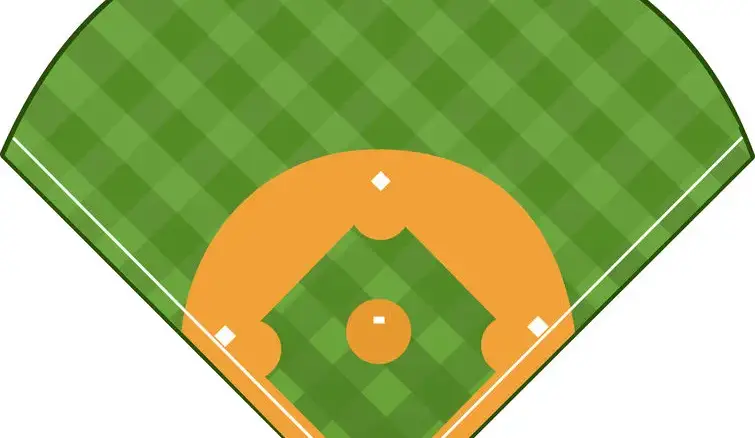
Defending the offence effectively is critical to the success of your own offence. Basic softball defensive strategy and tactics is a look at the fundamental defensive components of the game. I have always said that if you can keep your opponents from scoring you only need 1 run to win the game. I am a firm believer in the defense first theory and spent a lot of time on the field with my teams rather than more time in the batting cages.
Yes of course I spent time on the offensive components however when you think about it, each individual athlete spends more time defending runs than creating them.
Basic Softball Defensive Strategy And Tactics Considerations
- importance of the game
- developmental stage of your team
- score of the game
- skill level and experience of the athletes
- the inning
- coaching philosophy
I will now discuss in a little more detail some of the things that will effect your defense and how you might make changes or decisions based on what is happening with the offense.
Importance of the game
In a pre-season exhibition game, you might be working on specific defenses, or using that time to rehearse plays that you will use during the season. Pre-season is when your team is solidifying and allowing the players to ask questions as they are implementing skills worked on during pre-season practices.
During games that are more important such as playoff or tournament games, use the defensive tactics that the team is good at. It is definitely not the time to introduce a new tactic such as the “cut” play and expect that it will be executed to perfection. This game is one of errors and with stress and anxiety comes errors. Learning new skills under highly stressed situations then goes without saying, will create errors. Focusing on what your team already does well will eliminate the stress of something new and allow them to use their mental training skills to concentrate through the already existing distractions such as fans and opponents.
Score of the game
If there is no score, there will likely be a little more tension associated with making the play. No one wants to make the error that allows the opponents to get the first run of the game. Mental training skills are important in the ability to maintain the athlete’s skill level through this part of the game and to keep them as relaxed and easily focused as possible. It is also much more enjoyable for them as well when the stress level can be minimized.
If your team has a very big lead then the anxiety level will likely be lower because the urgency is not as high. The defense may also elect to simply get the outs at first base depending on the score, rather than focusing on the lead runner to prevent a run.
The Inning
The beginning of the game generally provides little stress and a feeling of calm and optimism with most teams. Even against the toughest opponents as the team takes the field they are usually saying to themselves…. “we can do this”
As the game moves forward and the score changes, that’s when things can begin to become a real challenge and either fear or confidence will set in. If the team is winning in the 5th inning by a good margin, they might be saying…. “yes… we have this.” While the coach (you) of course are saying… “stay focused, it’s not over yet”. the softball defensive strategy chosen will often be effected by these factors.
If the team is losing late in the game, there is a greater sense of urgency. Every mistake or error becomes bigger than it would if the team was ahead in the game. That’s when players might rush the play, there might be teammates, parents or coaches yelling where to make the play after the ball is fielded and runners might be running on the bases causing havoc. Not a good situation. This is where mental training again is critical to keep the energy and optimism as high as possible. We all know that anything can happen at any time in this great game.
A tight game in the last inning brings its own challenges as well. Without the best outlook the fear of losing can overtake the persistence to win a game. Fear brings its own enemies onto the field. Some say the meaning of fear is:
- F – False
- E – Evidence
- A – Appearing
- R – Real
Use this as a reminder for your players that we create the outcome through the process which begins at the beginning of the pre-season.
Skill level and experience of the athletes
New players to this awesome game will benefit most by focusing on simple tactics and Softball Defensive Strategy. Incorporating double plays and the defense for runners on first and third base, will only add to confusion and you will have a game of errors that brings frustration. Ensuring that they know where they are supposed to go and where to throw on the plays will give them confidence and increase their success with the ball. The Technical Pyramid that I developed for skills will help you to decide which skills to work on and when.
I strongly believe that one of the reasons players drop out of softball is simply because they are not having fun anymore. An overly competitive coach who imposes tactics that the team is not yet ready for will add to this dilemma and direct players out of the game. Keep it simple and educate the players and you will ensure a great environment that promotes confidence and and success.
Coaching Philosophy
Many defensive tactics can have a variety of ways to execute. For example, when there is a runner at first and third bases, some coaches will simply let the runner go from first to second uncontested, some will have the catcher throw to the shortstop and some will have the catcher throw to third base, simply to stop the runner from scoring. The other option too though is to have the second baseman cut in behind the pitcher to cut off the throw to second if the third base runner breaks for home.
Who takes the throw at second when a runner steals from first base. Most times it is the shortstop simply because they are moving in the opposite direction of the base and they can see the runner coming to the base rather than moving in the same direction having to look behind them to find the runner as the second baseman would. But sometimes the shortstop is left handed which might effect their ability to catch the ball and apply the tag so the coach may elect to have the second baseman take the throw.
Your philosophy as a coach will dictate how many tactics you use and how quickly they are implemented with your team. I would still recommend though that you keep things simple and follow the athletes direction rather than imposing plays that they are not ready for. I like to still be a student of the game and watch what other coaches do during competitions so that I can maybe compare my philosophy to theirs and see if I can pick up any great tips. We are the best poachers of skills and drills.
Positions
It is imperative that for new athletes they are not confused by too much on the field. I would recommend a maximum of 3 positions for each player that they will play during games. This will give them some confidence and knowledge so that they are not looking for what to do when the ball is hit. It is a good idea also to give the players information on their positions as well. Following is a quick view of positions information that I have composed that I have found very useful for my players over the years. Following is a PDF of the positions and their responsibilities and coverage assignments.
